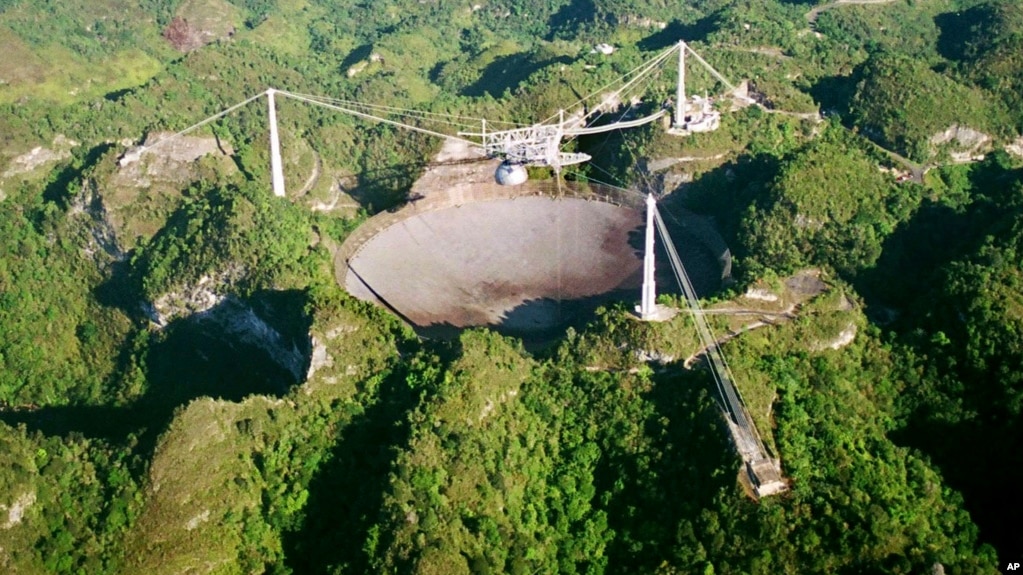
FILE- In this March 26, 2003, file photo, the world's largest radio telescope is seen from the air, at the Arecibo Observatory, in Puerto Rico. (AP Photo/ Tomas van Houtryve, File)
A huge, already damaged radio telescope in Puerto Rico collapsed on Tuesday. Its 800-metric-ton receiver stand fell onto the reflector dish more than 120 meters below.
The collapse at the Arecibo Observatory shocked scientists who had long used one of the world’s largest radio telescopes.
“It sounded like a rumble. I knew exactly what it was,” said Jonathan Friedman, who worked for 26 years as a researcher at the observatory and still lives near it. “I was screaming. Personally, I was out of control.... I don’t have words to express it. It’s a very deep, terrible feeling.”
Friedman said he saw a cloud of dust hang in the air where the structure once stood.
Carmen Pantoja is an astronomer and professor at the University of Puerto Rico. She used the telescope for her studies. “It’s a huge loss,” she said.
The telescope had survived ocean storms and several earthquakes in its 57 years of operation. It was built in the 1960s with money from the U.S. Defense Department.
Scientists used it to find and follow asteroids on a path to Earth. They also used it to find an unusual kind of star system, a binary pulsar, in 1967. The discovery earned scientists a Nobel Prize in 1974.
The U.S. National Science Foundation announced on November 19 that the Arecibo Observatory would close permanently. The 305-meter-wide dish was severely damaged in August. NSF scientists believed the cables could deal with the added pressure and weight they were carrying. But on November 6, the main cable broke.
The NSF said at the time that it wanted to one day reopen the visitor center and repair some of the operations. The observatory served as a training area for university students and received about 90,000 visitors a year.
“I am one of those students who visited it when young and got inspired,” said Abel Méndez, a professor at the University of Puerto Rico at Arecibo who used the telescope for research. “The world without the observatory loses, but Puerto Rico loses even more.”
About 250 scientists around the world, including Mendez, were using the observatory when it closed in August. They had used the telescope to study radio waves from distant planets. They had also used it to search for neutral hydrogen, which can help show how some cosmic structures are formed.
The Arecibo telescope was the largest radio telescope in the world for most of its existence. In 2016, it was surpassed by China’s 500-meter Aperture Spherical Telescope.
I’m Jonathan Evans.
The Associated Press reported this story. Hai Do adapted the story for Learning English. Ashley Thompson was the editor.
____________________________________________________________
Words in This Story
reflector - n. an object that is used to reflect light, signal
rumble - n. low, heavy series of sound
astronomer - n. a scientist who studies stars, planets and objects in outer space
cable - n. a thick, strong rope made of wires that are twisted together
inspire - v. to make someone wants to do something
cosmic - adj. of or relating to the universe or outer space
surpass - v. to be better or greater than something
Comprehension Quiz
When was the telescope built?